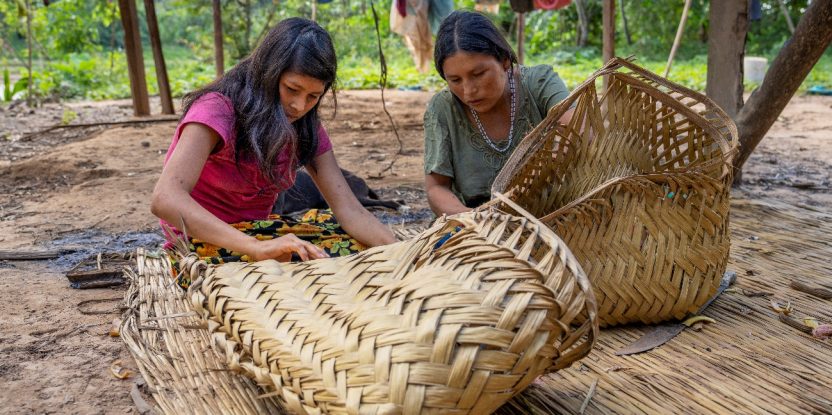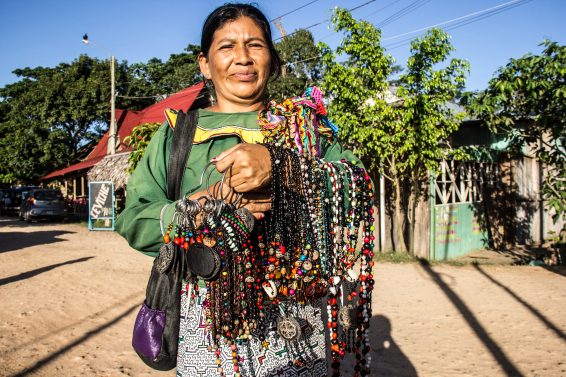
If you’re interested in global environmental issues, you’ve likely come across the claim that “Indigenous People’s territories hold 80% of the planet’s biodiversity”.
The figure is cited widely across academic articles, global fora such as the United Nations and the World Bank, advocacy documents, and has taken root in public discourse as an established truth.
Yet a just-published comment in the journal Nature shows it’s not supported by research, and likely stems from a misquote.
The authors — who include a multidisciplinary team from the Institute of Environmental Science and Technology at the Universitat Autònoma de Barcelona (ICTA-UAB) in collaboration with a broader group of researchers, practitioners and Indigenous Peoples’ representatives — emphasize that the finding does not detract from the causes that the figure is often used to champion.
Indeed, there’s “ample evidence that Indigenous Peoples and their territories are essential to the world’s biodiversity, rendering the use of an unsupported statistic such as the ‘80% figure’ unnecessary,” said Álvaro Fernández-Llamazares, a scientist at ICTA-UAB and one of the co-authors of the piece, in a press release.
To cite just some of that evidence: Indigenous Peoples manage or hold tenure rights to about a quarter of Earth’s land surface, containing 37% of remaining natural lands worldwide and a third of the planet’s intact forest landscapes. The decline and degradation of biodiversity is also less severe on Indigenous Peoples’ territories than in similar ecosystems elsewhere, even where there is armed conflict. Indigenous Peoples’ territories are less likely to be developed for intensive agriculture than other areas and have fewer land clearing frontiers. Plus, over 2,500 mammal species have more than 10% of their ranges within Indigenous Peoples’ territories, representing around 60% of all terrestrial mammals with reliable habitat data.
It’s notable that none of the above figures make mention of any percentages of global biodiversity. That’s because, as the co-authors explained, biodiversity is essentially unquantifiable and unmappable. It “encompasses much more than just the number of species and ecosystems, implying the understanding of complex entanglements between humans and non-human nature,” they wrote.
“Such entanglements may be particularly difficult to describe and enumerate in reference to Indigenous lands,” said Joji Cariño, a co-author and senior policy advisor at the Forest Peoples Programme, in the press release. “The biological and cultural diversity on ancestral lands and waters of Indigenous Peoples have co-evolved over time underpinned by living reciprocal, kinship, and sacred relationships,” he said.

Traditional seed’s art craft from indigenous communities in Ucayali. Photo by Juan Carlos Huayllapuma/CIFOR-ICRAF
From a scientific perspective, biodiversity is defined under the Convention on Biological Diversity (CBD) as “the variability among living organisms from all sources including…ecosystems and the ecological complexes of which they are part” and “diversity within species, between species and of ecosystems.” As the co-authors stated, “such complexity cannot be enumerated so no comprehensive inventory of items constituting biodiversity is possible nor, were it attempted, meaningful.”
More pernicious still, the 80% figure implies that “characterization of biodiversity must be complete, both globally and on Indigenous Peoples’ [territories],” they wrote.
“In fact, for the Indigenous knowledge holders and scholars who have been developing the case for the global conservation significance of Indigenous governance, the research needed to characterize biodiversity patterns on Indigenous Peoples’ [territories] is only just starting.”
Where, then, did the 80% figure come from, and how did it make it past so many peer reviewers and fact-checkers? “It’s a bit of a mystery,” said co-author Julia Fa, a professor of biodiversity and human development at Manchester Metropolitan University and a senior research associate with the Center for International Forestry Research and World Agroforestry (CIFOR-ICRAF). “I think it’s been misinterpreted.”
The figure first appears in academic literature in the early 2000s by way of uncited claims in UN and World Bank reports, which may have drawn inaccurately from various other studies published around that time that cite different ‘80% figures’, such as the assertion in the 2000 edition of the Encyclopedia of Biodiversity that “nearly 80% of the terrestrial ecoregions are inhabited by one or more indigenous peoples.” It remains unclear where and how the misunderstanding emerged, but it seems that once the figure was repeated enough in reputable circles, it became perceived as an established truth.
Fa acknowledged the piece’s political sensitivity, given the figure’s popularity as a bolster to arguments for Indigenous territorial rights. This, she said, necessitated a long, slow consultation process with a wide range of Indigenous Peoples and environmental advocates to see whether they felt that publishing such a piece might undermine what they had been doing and wanted to do.
“It was a dilemma for us,” said Fa, “because we wanted to be true to the data, but at the same time, we knew that coming up with this might do damage to advocacy for Indigenous lands and Indigenous peoples, which we don’t want to do.”
However, the consultations revealed that many such advocates were uncomfortable with the figure and avoided citing it. The team concluded that it made sense to speak out, and that continuing to recite a figure with a spurious scientific basis could be more damaging for Indigenous rights down the line.
“We want a nuanced but fair way of looking at science,” said Fa. “We can’t just go with populism or sloganism. We need to be true to what the data is.”
We want you to share Forests News content, which is licensed under Creative Commons Attribution-NonCommercial-ShareAlike 4.0 International (CC BY-NC-SA 4.0). This means you are free to redistribute our material for non-commercial purposes. All we ask is that you give Forests News appropriate credit and link to the original Forests News content, indicate if changes were made, and distribute your contributions under the same Creative Commons license. You must notify Forests News if you repost, reprint or reuse our materials by contacting forestsnews@cifor-icraf.org.